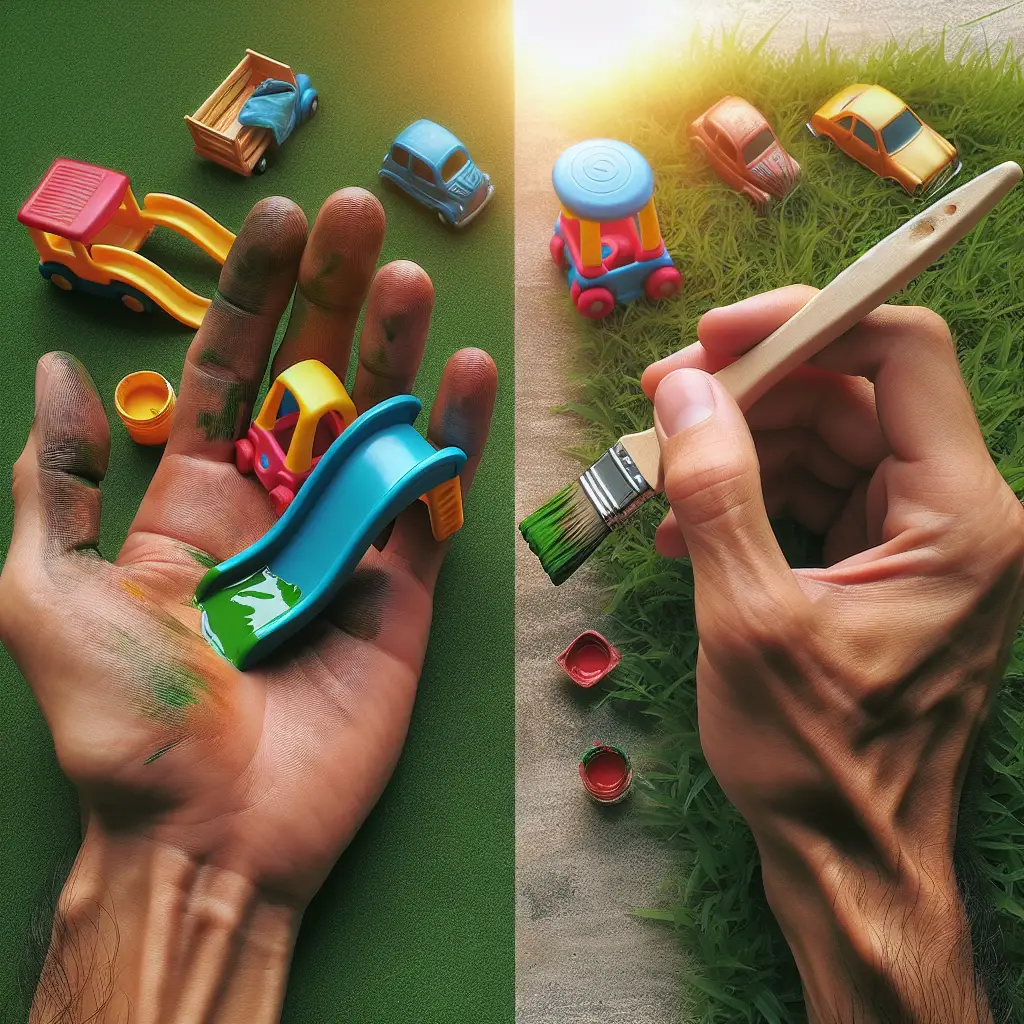Title: Can You Paint Plastic Outdoor Toys?
If you’re looking at your once colorful outdoor play area, only to find the vibrant hues have faded into a dull monochrome, you might be considering a facelift for those plastic toys. The question arises – can you paint plastic outdoor toys to bring back that splash of joy they once brought to your garden? The answer is a resounding yes! Painting plastic outdoor toys isn’t just a quick and affordable way to revitalize your backyard—it’s also a great way to inject a bit of your personal style into the mix.
Why Paint Plastic Outdoor Toys?
Durability and Protection
Outdoor toys often suffer from constant exposure to the elements. Sunlight, rain, and temperature fluctuations can make plastic brittle and color fade. A fresh coat of paint not only makes them look new again but can also add a layer of protection against UV rays and weather.
Eco-Friendly Solution
Instead of tossing away toys that are merely cosmetically worn out, repainting them can be a more sustainable option, extending their life cycle and keeping plastic out of our environment.
The Aesthetic Appeal
Let’s face it; a well-kept garden includes beautifully maintained toys. A lively, colorful play area can be as much a decorative element in your garden as your flower beds and ornamental shrubs.
Getting Started: What You’ll Need
- Soap and Water
- Sandpaper (220 grit)
- Spray Primer for Plastic
- Spray Paint for Plastic
- Protective Gear: Gloves, Mask, Goggles
- Drop Cloths or Newspaper
Prepping Your Outdoor Toys for Painting
Step 1: Clean Your Toys
Dirt and grime won’t allow paint to adhere properly, so begin by giving your plastic toys a good wash with soap and water. Ensure they’re completely dry before moving on to the next step.
Step 2: Sand the Surface
Using your sandpaper, lightly sand the surface of the plastic to create a rough texture for the primer to grip onto. It doesn’t need to be excessive, just enough to remove the sheen from the plastic.
Step 3: Apply Primer
After you’ve sanded and wiped the dust off, apply a light coat of plastic-friendly primer (Krylon Fusion for Plastic is a popular choice). Remember to use sweeping motions to avoid drips and to ensure an even coat.
Painting Your Plastic Outdoor Toys
Step 4: Spray Paint the Toys
Once the primer is dry (which could take a couple of hours), apply the spray paint designed for plastic. Brands like Rust-Oleum offer paint specifically formulated for outdoor plastic which resists chipping and provides superior coverage and durability. Apply several thin coats, allowing time for drying between each coat.
Step 5: Let it Dry
Be patient. Allow the final coat of paint to dry completely. Depending on the brand and environmental conditions, this could take anywhere from a few hours to overnight.
Selecting the Right Paint for Plastic Outdoor Toys
Choosing the right paint is crucial for a successful outcome. Not all paints are created equal, particularly when it comes to plastic surfaces. For excellent results, opt for paints that are specifically labeled for plastic use. These paints contain special bonding agents that help adhere to plastic surfaces without peeling or flaking off.
Aftercare and Maintenance
To ensure that your newly painted toys stay looking fresh for as long as possible, keep them out of direct sunlight when not in use, and consider using a UV-protective spray as a topcoat to extend the life of your paint job. It’s also wise to do touch-ups on any chips or scratches annually to prevent water and sun damage.
Common Challenges and Tips
Paint Adhesion Issues
If paint isn’t sticking, it’s often because the surface wasn’t sanded enough or the toy wasn’t cleaned properly. Always make sure to sand and clean thoroughly before priming.
Drips and Bubbles
This often happens when paint is applied too thickly. Go for multiple light coats instead of one heavy one to prevent drips and bubbles.
Conclusion
Revamping your plastic outdoor toys with a new coat of paint is a fun and rewarding project that can extend the life of the toys and enhance the aesthetic of your outdoor space. Always remember to take necessary safety precautions when spray painting, and choose the correct products for the best results.
By breathing new life into your plastic toys, you’re not only creating a vibrant play area for your children but you’re also practicing eco-friendly habits by repurposing and upcycling. So, go ahead and unleash your creativity – it’s time to make those plastic toys look as good as new!
For more expert gardening and backyard advice, visit our blog frequently, where we share insights and tips to help you create your perfect outdoor sanctuary.
Gardeners often wonder if they can add some color to their outdoor space by painting plastic toys, and the answer is a resounding yes! With the right preparation, products, and techniques, you can give those toys a makeover that will stand up to the test of time and play. Plus, it’s an eco-friendly choice that will make your garden even more beautiful. Happy painting!


